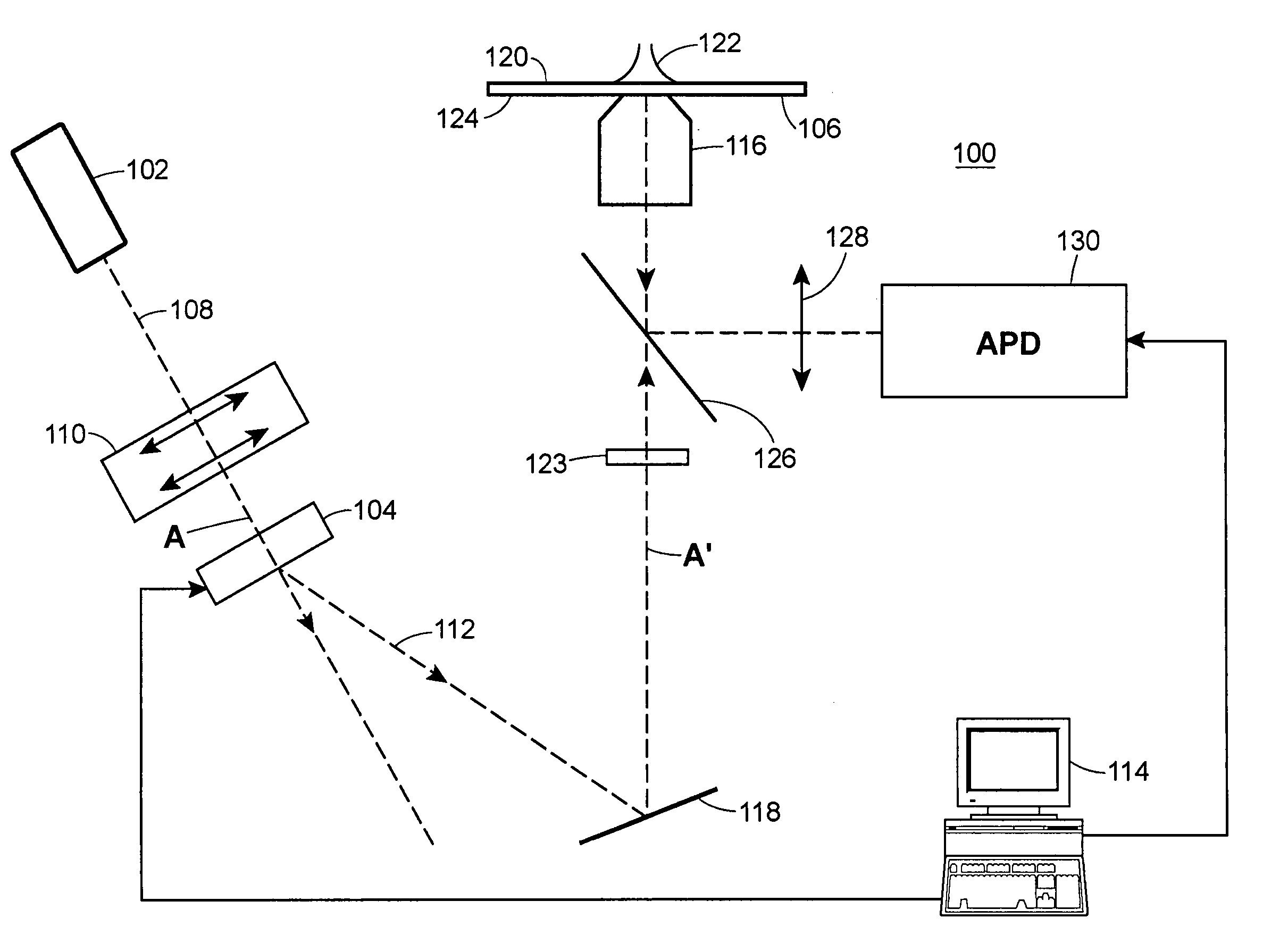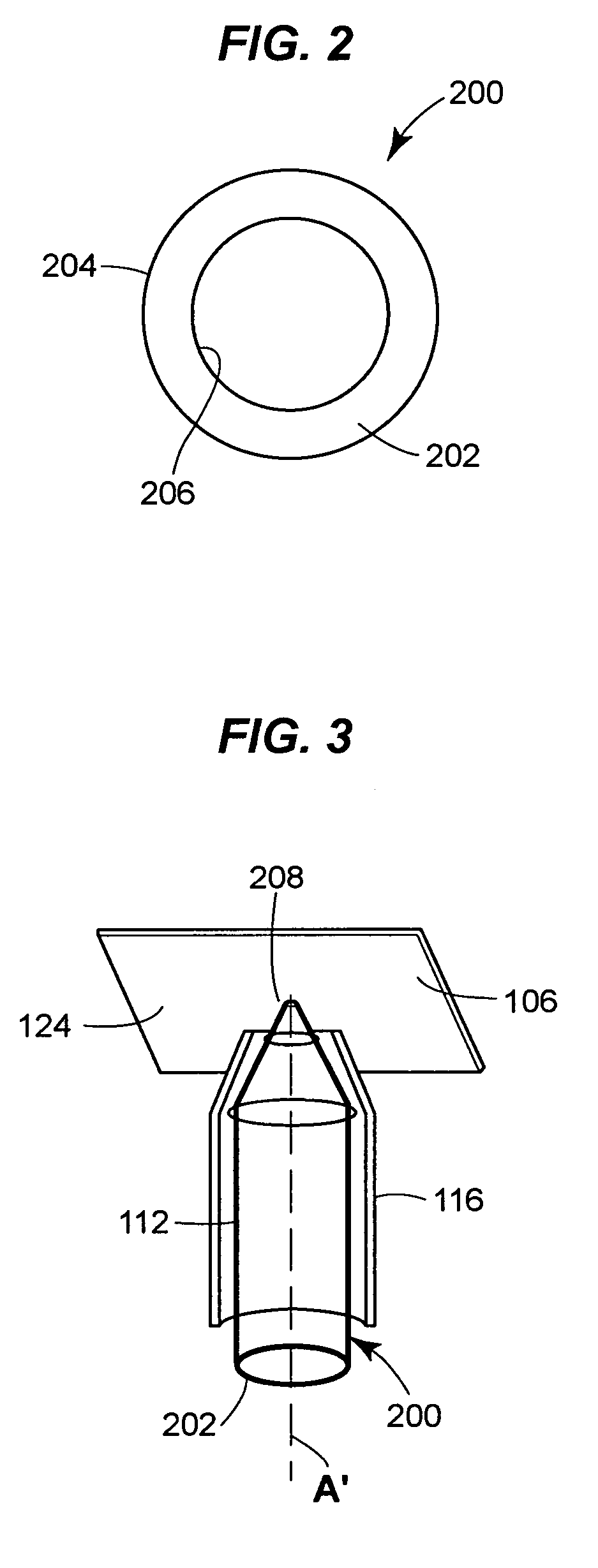Total internal reflection fluorescence apparatus
a fluorescence apparatus and internal reflection technology, applied in the field of fluorescence techniques, can solve the problems of insufficient present spectroscopy and microscopy techniques, limited techniques, and large number of contaminants in the sample volume tested
- Summary
- Abstract
- Description
- Claims
- Application Information
AI Technical Summary
Benefits of technology
Problems solved by technology
Method used
Image
Examples
example illumination
[0041]The initial radius of a reference beam produced by a Coherent Sapphire 488-20 laser from Coherent, Inc. of Santa Clara, Calif. was magnified using a telescope in order to entirely cover the active area of a computer controlled SLM as the DOE, an LC2002 LCD available from Holoeye Photonics AG of Berlin Adlershof, Germany. The adjustable SLM was connected to a computer via a video board, a Matrox G450 PCI-video board available from Matrox Graphics Inc. of Quebec, Canada, to display a chosen phase mask profile. When the phase mask was illuminated with the laser beam, it produced a hologram shaped like a hollow tube of light deviated angularly from the zero-order beam.
[0042]For forming the phase mask, a scalar propagating field in a source free region z≧0 representing a laser beam profile was given by:
[0043]E(x,y,z≥0,t)=exp[ⅈ(βz-ωt)]∫02πA(ϕ)exp[ⅈα(xcosϕ+ysinϕ)]ⅆϕ.(1)
A hologram of radius R was characterized by the complex amplitude function t(ρ,φ)=A(φ) exp [...
example fcs implementation
[0052]The reference beam from the Coherent Sapphire 488 nm-20 mW blue laser was focused onto a diffraction-limited spot in a bacterium sample using an illumination apparatus as described above. The green emitted fluorescence from the excited region of the bacterium sample was collected with a confocal detection system that included a photon counting module (e.g., a SPCM-AQR-16FC, a single photon counting module operating over a range of 400 nm to 1060 nm at 25 black current counts per second, available from Perkin-Elmer of Wellesley, Mass.) that monitored photon events associated with the free diffusion of fluorescent particles in the detection volume. Fluorescent labeled latex beads (e.g., G40 fluorescent polymer microspheres, available from Duke Scientifics Corp. or Palo Alto, Calif.) were used to characterize the effect of the annular illumination in FCS measurements. The collected green fluorescence was coupled into an optical fiber receptacle for the photon counter and was anal...
PUM
| Property | Measurement | Unit |
|---|---|---|
| penetration depth | aaaaa | aaaaa |
| penetration depth | aaaaa | aaaaa |
| penetration depth | aaaaa | aaaaa |
Abstract
Description
Claims
Application Information
 Login to View More
Login to View More - R&D
- Intellectual Property
- Life Sciences
- Materials
- Tech Scout
- Unparalleled Data Quality
- Higher Quality Content
- 60% Fewer Hallucinations
Browse by: Latest US Patents, China's latest patents, Technical Efficacy Thesaurus, Application Domain, Technology Topic, Popular Technical Reports.
© 2025 PatSnap. All rights reserved.Legal|Privacy policy|Modern Slavery Act Transparency Statement|Sitemap|About US| Contact US: help@patsnap.com



